Ultrasonic liposuction is an add-on to a typical liposuction procedure that assists in the removal of fat by liquefying and emulsifying it before extraction with the cannula. Ultrasonic-assisted liposuction (UAL) has several benefits over traditional liposuction, but it has its own drawbacks, too. In this article, we aim to explain ultrasonic liposuction to you in the fullest detail so you can make an informed decision about whether or not you are a good candidate for the procedure.
What Is Ultrasonic Liposuction?
Ultrasonic liposuction is functionally identical to a traditional liposuction procedure, but it comes with an extra step. After the tumescent fluid is injected into your body, your doctor will then use an ultrasonic device to emulsify the fat within the tumescent fluid. This assists in the removal of the fat, allowing it to be removed smoothly and, often, with less trauma than a traditional liposuction procedure.
How the Ultrasonic Liposuction Procedure Works
Ultrasonic liposuction makes use of ultrasonic waves to turn fat to liquid instead of a solid. Because of this, the fat is much easier to remove via a suction device. As such, the procedure is particularly well-suited to areas with difficult-to-remove, fibrous fat, such as:
- Knees
- Neck
- Feet
- Ankles
- Chin
Ultrasonic liposuction can be conducted in two different ways: externally and internally. With internal ultrasonic liposuction, a small ultrasonic device is inserted into the incisions to break up the fat from the inside. With external ultrasonic liposuction, the device is instead large and paddle-like, and it is used on the surface of the skin with no incisions. Both methods have their own specific benefits and drawbacks that we will cover later in this article.
Areas that Ultrasonic Liposuction can Treat
Theoretically, ultrasonic liposuction can function on any liposuction-compatible area of the body. However, it does excel in certain areas, like the ones we mentioned above. UAL is also especially useful in taking care of fat “rolls” that may be too fibrous to attempt with traditional liposuction.
Benefits of Ultrasonic Liposuction
Ultrasonic liposuction has several main advantages over traditional liposuction. The first of these is to remove fat that can be difficult or impossible to remove through conventional methods. These fat deposits are often fibrous or otherwise hard to budge, and liquefying the fat first allows the fat to be removed around these skin fibers that would normally hold it in place.
Additionally, ultrasonic liposuction can sometimes be done without incisions. Certain brands of ultrasonic liposuction work to liquefy fat then let the fat be naturally eliminated by the body rather than removing it via a vacuum. This type of non-invasive procedure has less downtime than incision-assisted liposuction, but it also has its own set of drawbacks.
Risks of Ultrasonic Liposuction
As with most medical procedures, ultrasonic liposuction is not without risk. Firstly, the nature of the ultrasonic waves on the body can cause nerve damage and loss of sensation in procedure areas. In the worst cases, this can result in peripheral nerve damage extending to other parts of the body, and this can be very serious. This is common with both external and internal ultrasonic liposuction, and UAL can also result in skin necrosis and bruising in some situations.
In addition to the above drawbacks, ultrasonic liposuction is not immune to the side effects of a traditional liposuction procedure. These include:
- Infection
- Bleeding
- Bruising
- Complications with anesthesia
- Fluid accumulation (seromas)
- Scarring
- Blood clots
The risk of developing seromas is also higher with UAL than with traditional liposuction, particularly with internal UAL. UAL can also cause skin burns and other damage that traditional liposuction does not.
Is Ultrasonic Liposuction Safe?
Ultrasonic liposuction does have a slightly higher rate of complications than traditional liposuction. However, its benefits can still make it an attractive procedure for many people.
Since it has been done for many years, liposuction is a well-studied and relatively safe medical procedure, so the risk of serious complications is usually quite low. However, you should always talk to your doctor about whether you might be more at risk for certain complications or side effects.
Recovery Time of an Ultrasonic Liposuction Procedure
The full healing process after UAL can last for six months or more. During this time, your body will gradually heal from the removal of fat cells, new layers of skin will form, and the swelling will decrease over a long period of time. For the first few days after your procedure, you will likely experience discomfort and swelling, but these can be controlled with painkillers.
How Many Ultrasonic Cavitation Treatments Are Needed?
Ultrasonic cavitation is another type of external ultrasonic liposuction. In this procedure, an ultrasonic device is used to burst fat cells instead of liquefying them. Then, the contents of these fat cells are reabsorbed by the body, resulting in a slimmer appearance over time without invasive surgery.
Reportedly, between eight and twelve ultrasonic cavitation treatments are necessary to get optimal results. However, the exact number you need can vary based on a variety of factors, such as weight, age, and treatment area size.
How Much Does Ultrasonic Liposuction Cost?
Different procedures for ultrasonic liposuction cost different amounts of money. Ultrasonic cavitation, which we mentioned above, costs about $300 per session, for example. UAL, on the other hand, costs around $3,200 overall. This means that both of these procedures often end up being about the same price.
Ultrasonic Liposuction vs. Coolsculpting
Ultrasonic liposuction differs from Coolsculpting in several different ways. The main difference is that Coolsculpting uses cold to kill fat cells instead of liquefying them with ultrasonic waves.
Additionally, Coolsculpting is not an invasive procedure. While some ultrasonic liposuction procedures are non-invasive, Coolsculpting always relies on the body to eliminate fat cells that are destroyed during the procedure. As such, invasive UAL can provide more immediate results than Coolsculpting in most scenarios.
Since Coolsculpting is a non-invasive procedure, clients will need to return to the Coolsculpting office several times before the full benefit of their treatment can be seen. This is another key difference – while some ultrasonic procedures can be done externally and in installments like Coolsculpting can, invasive UAL is typically a one-visit endeavor. This is something for prospective patients to consider, too.
Alternatives to Ultrasonic Liposuction
With the desirability of cosmetic procedures (especially fat removal procedures) always being high, there are always plentiful options on the market to try for fat elimination or reduction. Laser liposuction, for example, is very similar to ultrasonic liposuction, but it uses the assistance of a laser to melt tissue instead of an ultrasonic device.
We’ve already mentioned Coolsculpting above, but there are many more alternatives to UAL out there. Ask your doctor if any of the following procedures might be right for you.
Radiofrequency-Assisted Liposuction (RFAL)
Radiofrequency-assisted liposuction is another similar procedure to ultrasonic and laser liposuction that works under the same premise. However, with RFAL, a radiofrequency-emitting electrode is used to liquefy fat instead. Another electrode is used to guide these frequencies through the fatty tissues, heating and eventually melting the fat.
RFAL is thought to be especially effective at promoting the formation of new collagen and reducing the appearance of cellulite. Therefore, RFAL may be an excellent choice for older patients or others with loose or sagging skin.
Tummy Tuck
Of course, surgery is always an alternative to liposuction, but it’s typically not patients’ or doctors’ first choice because it is somewhat invasive. A tummy tuck has a higher downtime than liposuction, and it is also prone to more complications.
However, surgery is the most exact way to remove stubborn fat areas, and it has the added bonus of being able to tighten sagging skin, too. Liposuction cannot provide the level of skin tightening that many patients need after fat removal, even for collagen-stimulating procedures like UAL and RFAL.
Laser Liposuction
As we’ve touched on in this article, laser liposuction is another alternative to UAL that may be appropriate for some. Laser liposuction can be done internally or externally, meaning it can be invasive or non-invasive. Some non-invasive laser treatments can be very inexpensive, making them an attractive prospect.
Traditional Liposuction
Liposuction without the use of an ultrasonic device is an option, as well. Traditional liposuction involves injecting tumescent fluid into the operating area, then vacuuming out the fat and liquid with a cannula. While traditional liposuction doesn’t offer any functional advantages over UAL, it’s often cheaper, and it can be prone to fewer side-effects as well.
Conclusion
Overall, UAL is not a bad option. As with any other medical procedure, it provides specific benefits as well as the risk of several side effects. While we cannot say UAL is the best procedure for everyone (or even the best procedure for fat reduction), it has its fair share of benefits that set it apart from related methods.
When considering liposuction procedures, there is no reason not to add UAL to your lineup, especially if one of its strengths, like the stimulation of collagen production, aligns with what you need. Just be sure that you’re well aware of the benefits, risks, and what’s involved before agreeing to receive any procedure.

